- Articles
- Cherries
- Minutiae
- Q&A
- RAINN
- Releases
- Reviews
- Site News
- Them
- Toriphiles
- Touring
- TV/Radio/Web
- Video
News Archives
Keep an eye on our Twitter and Facebook pages since we often post quickie updates there when we're on-the-go.
During tours, we do our best to cover setlists in real-time on Twitter. If you want to tweet a show in, just DM or @ us on the day and tell us to watch your stream that night.
Tori is touring in 2017 to support the release of Native Invader. The European legs runs from early September through early October and the North American leg runs from late October to early December. We do not know if additional dates elsewhere will be added.
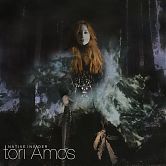
Native Invader (album, 2017)

Unrepentant Geraldines (album, 2014)

Gold Dust (album, 2012)
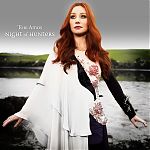
Night of Hunters (album, 2011)

Midwinter Graces (album, 2009)
 Abnormally Attracted To Sin (album, 2009)
Abnormally Attracted To Sin (album, 2009)
Live at Montreux 1991/1992 (DVD, 2008)

American Doll Posse (album, 2007)
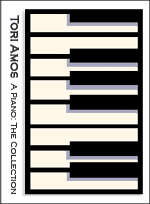
A Piano (boxed set, 2006)
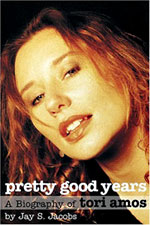
Pretty Good Years
(bio, 2006)

Fade To Red
(DVD, 2006)
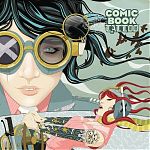 Comic Book Tattoo (book, 2008)
Comic Book Tattoo (book, 2008)News: John Philip Shenale: The Glide Magazine Interview
As a producer, I understand that things are changing every album. And my relationship with Tori, from my historical point of view, is that she represents, for me, a complex, multi-faceted musical talent that always surprises me. And as a result, I love that situation because it’s always challenging and a new approach. It’s a constant question of how to handle the emotional fabric of the songs but still move forward. It’s always something new. And watching her create and invent really inspires me to do the same, so that’s where a lot of the impetus comes from. It’s always a psychological and metaphysical experience with her. She’s one of the deepest artists I’ve ever worked with.
We don’t get many chances to hear from John Philip Shenale, the composer and arranger behind so many of Tori’s orchestra-infused songs — and a major force involved in the creation of Night of Hunters. Glide magazine recently sat down with him for an extensive interview, which they published in two parts just as Sin Palabras was released last month. Click through the jump to check out the whole thing!
John Philip Shenale: In Conversation [Part I]
By Peter Zimmerman
December 13, 2011
Today, Deutsche Grammophon releases Sin Palabras (Without Words), the instrumental companion to Tori Amos’ brilliant record Night of Hunters, which came out earlier this year to much critical and commercial success. While the lyrics and vocals have been stripped away and the instrumental section remastered by Jon Astley, the narrative of the work remains fairly present throughout. This is very much a result of the superlative work done by John Philip Shenale in composing all of the orchestral arrangements for the record.
Having worked with Amos since her debut in 1992 with Little Earthquakes, Shenale has been a constant force in bringing certain songs in Amos’ repertoire to new levels with the thoughtful and judicious addition of string sections. Never has there been a more fully-formed and masterful fruition of his talents vis-a-vis Amos’ aesthetic, however, than on Night of Hunters. Harnessing the acoustic power of an octet (with the occasional appearance of contra-bassoon) to supplement Amos’ visceral Bösendorfer piano provides the songs with aural intensity, and by rooting each piece in classical texts while allowing Shenale the opportunity to flirt with modern 20th Century musical motifs fleshes out Hunters’ arc into a riveting, and somewhat alchemical, fusion of myth and present day, dream logic and reality.
With Sin Palabras, listeners can dig deep into the compositions on each of Hunters’ fourteen tracks, and while there’s no vocal to ostensibly anchor the pieces, Amos’ inimitable piano maintains the stylistic thread. But what’s fascinating is the unencumbered experience of leaping into Shenale’s orchestrations. This instrumental companion actually opens the Night of Hunters project up to so many new worlds and gives an entirely new entry point and life force to the work. So while much esteem should be paid to Amos for conjuring up and executing what remains as one of her most vital musical contributions to date, similar praise must also go to John Philip Shenale. His deft hand at bringing Amos’ vision to life through orchestral accompaniment is one of the key reasons why Hunters is such a success, and his involvement on this album exhibits some of his most daring and absorbing work to date.
Glide Magazine had the chance to talk at length with Shenale about the writing and recording of Night of Hunters, as well as discuss Amos’ 2011 world tour in support of the record, for which Shenale re-arranged and re-interpreted a large number of songs from her catalogue for the show. In Part I of our conversation, we examine the Night of Hunters creation process. Later this week, Part II will focus on Shenale’s work on the Night of Hunters tour and his background with Amos and their history of working together, including the serendipitous point where he took the helm as her orchestral counterpart.
You’ve worked with Tori for some time now. When she decided to do this project for Deutsche Grammophon, were you immediately contacted about participating? If not, at what point did the project require your assistance in doing the orchestrations for the octet?
It was certainly early on, I believe. In the middle of 2010, I was digging into the arrangements for the show in October with the Metropole Orkest in Amsterdam, and I got a call in the early morning from Tori about the possibility of doing the record for Deutsche Grammophon. From that point on, it was a constant stream of thought that we had going on, wondering what the size would be— the shape, the narrative, etc. We were throwing ideas around about sound and concept for months ahead of everything. Earlier this year, though, Tori started giving me her completed songs, and I worked from that on my arrangements.
A major contributor in this process between me and Tori was Dr Alexander Buhr, chief musicologist for Deutsche Grammophon. He made substantial contributions to Tori’s research of classical source material. I also studied works that I thought had connection with what we were doing, even tangentially: Brahms sextets and quartets, Hindemith Stravinsky and Spohr octets, Shostakovich’s 3rd 4th and 7th quartets, Darius Milhaud’s la Creation du Monde, the sextet version of Verklerte Nacht by Schoenberg, etc.
How did you select the octet used on Night of Hunters?
As Tori and I began forming a concept of what would be the instrumentation for Night of Hunters, we knew early on that it would be an intensely intimate sound. A quartet of strings would be essential and an equivalent woodwind family was necessary to convey the maximum emotion and color but still retain the chamber quality. But it was really Alex [Buhr] who was instrumental in the selection of all the players on the album. They are all such superb musicians.
Each song is rooted in a specific classical text, whether from Schubert, Granados, Satie, etc. How familiar were you with these pieces beforehand? What was your research process like to dig into these works?
I didn’t refer to or refresh my memory of the source material, because I knew I needed to approach each song as “Tori’s composition,” putting the original presentation from each composer out of my mind. This was definitely made easier because Tori’s deconstruction and narrative were both so strong, which then compelled my arrangements to be driven exclusively by Tori’s re-construction and text.
The Alkan piece (Prelude Op. 31, No. 8 “The Song of the Madwoman on the Shore”) was new to me. I have been in love with Schubert’s lieder since college, though. I remember hearing a live performance of Der Erlkönig, which brought me to tears.
When you’re given a piece of music that is piano and voice, is there an instrument you go to first (when working with an octet or more) to form the foundation of your orchestration?
It really does depend on the type of arrangement. For example, for “Nautical Twilight” I used the violin and viola as my starting seeds, because of the nature of their dialogue with Tori’s melody and the text of early evening creatures darting in and out around her. For “Shattering Sea,” I went with bassoon and oboe first, because the attack of the double reeds and their dexterity were vital for that opening. I often have gone to the cello and viola for power and pathos in many of my rock arrangements over the last decade, but I’ve been using the violin as the start of many arrangements recently.
What songs were particularly challenging on Night of Hunters? How did you work through the difficulties?
I would say all were equally intense for various reasons, the size of the group was really 10 pieces when you include Tori’s melody/lyric and Bösendorfer piano, and eleven with the contra bassoon. The narrative must kept in mind at all times, too, as it existed as its own instrument in my mind. I would consider questions like, “Is the octet harmonious with Tori? Should it feel neutral or antagonistic? Does the arrangement provide a history or subtext? Is it tightly tied to Tori’s voice or dances around like a fairy or sprite?,” and so on.
In “Shattering Sea,” for example, there’s a major dichotomy between calm and storm in Tori’s performance, between the aggression of the piano and then the relative composure of the vocal, so that had to be reflected and enhanced. The octet has to always be propelling the piece and narrative forward, so I fragmented some of Tori’s piano melodies and their extensions in the storm sections across the octet and separated the dissonances across octaves. With “Fearlessness,” it was vital to enhance the rolling rhythm of Tori’s piano without interfering, but still bolstering the sound and breadth. With “Star Whisperer,” which involves a major instrumental break, it was just so epic and multi-faceted that I could really work through a wide range of colors through different solos and manipulating the power dynamics.
“Star Whisperer” contains the longest instrumental break in the album— well over three minutes. What was your approach in that song, to maintain focus but also to fit in with the “Other Side of the Mountain” theme and the Schubert piece?
I thought that her choice to put “Other Side of the Mountain” into “Star Whisperer” was perfect. That was quite an involved arrangement, with three different integrated sections: the intro and end largo sections, the “Other Side of the mountain” and then the soli and tutti instrumental in the middle. With that song, we had to bring life and myth and roll them together into one complete entity. Tori had subdivided the instrumental into various motifs, and so we were able to play off of that mapping, but yeah— it was definitely a long and involved process!
“Battle of Trees” sounds like it uses a prepared piano, with pizzicato strings and a really restrained opening, blossoming into richer orchestrations. Since that song is an epic poem of sorts, how did you approach your orchestration?
In “Battle of Trees,” maintaining whimsy was a main focus for me. I used mutes on the strings in the beginning to create the ambiance of a deep exotic woods, which matched Tori’s prepared piano. To get her piano to sound like that, I used rubber wedges on the first harmonic of the piano strings. Then, the muted pizzicato strings of the quartet enter as a mirroring of the sound of the prepared piano. “Battle of Trees,” actually, is a good example of the need for both woodwinds and strings in this project. Every section brings a new emotion into the piece, which is based on similar melodies and their development, like a growing and evolving tapestry. The two different sounds between woods and strings were used singularly and then combined to make for evocative textures.
“Seven Sisters,” which is the first completely instrumental piece to show up on a proper studio record in Tori’s discography. The source text for the song is Bach’s “Prelude in C Minor,” but I’m getting a really distinctive Philip Glass impression from the construction. Am I crazy for hearing that?
(laughs) I’m sorry for cracking up, but it just always amazes me how insightful people are. That’s great, and yeah you’re absolutely right. It wasn’t Philip Glass specifically, but it definitely was the Minimalist school that is there in the piece.
The thing about Tori’s playing is that she’s got this beautiful figure going on, and I wanted to preserve that. I wanted it to be a dance, and not exactly two solos playing at the same time, where you’re just showing off. The whole Minimalist palette allows the clarinet to hide and then display itself throughout. And then there’s this fragmentary concept in which there’s these pieces that show up and break and then come into full melody, but it’s grounded in a modal framework, so you get a motion that creates dynamics rather than dynamics creating dynamics. It comes through the rhythm and these percussive moments of instruments appearing and disappearing. Also, Tori really wanted there to be an appearance by a “male force,” and I thought the dance effect between the “female” piano protagonist and the male clarinet worked well in that Minimalist structure.
I think the word “dance” is probably the most succinct way to discuss the song. It really comes down to the magical interplay between the clarinet and piano.
I loved it. And I have to say that Andreas was just ridiculous. He was phenomenal.
I don’t want to necessarily say that “Seven Sisters” breaks narrative with the rest of Night of Hunters, but I find this nod to Minimalism, which in my mind is not necessarily the focus of composers like Mendelssohn, for example, opens up the record to these more modern classical times, so it, in a way, thrusts the piece into this modern sphere without betraying its history.
I can hear what you’re saying, but using modal and scalar was definitely in the 19th Century practice, but is definitely Minimalist in practice, yes. I bet you can find work that is similar in setup in a 19th Century common practice, so I don’t find it that much of a jump. I think what’s interesting is that you’re reading from a Philip Glass/Minimalist brain looking back into it, but I still think the piece fits within the context of the record. There are extensions into the 20th Century in the rest of the album, although everything is definitely mixed in. With “Seven Sisters,” though, it really becomes apparent.
Another example of the dance effect, though, can be found in “Nautical Twilight.” It’s technically a similarly fragmented melody that expands out to create the dynamics and movement. Throughout the song, you have the viola in every introduction of the verse playing these fragments, where the viola is dancing around Tori’s melody, coming in and out. So, in a way that can absolutely be considered Minimalist as approach and execution, even though that piece comes across as grounded in that classical sound.
But if we look at Postmodernism, for example, where it’s this concept of history as just iterations of itself repeated throughout and not necessarily constant innovation— especially if we’re looking at music or the visual arts— don’t you feel there’s a level at which we’re essentially still making music that still draws from the constructions of the Mendelssohns, Schuberts and the like that are used as sources in Night of Hunters.
OK, yeah, I actually really agree with that. It’s interesting to bring up Postmodernism, because all of these composers that Tori used were ones that did leaps forward in their craft, where they drew from musical history but propelled their worlds, both technically and aesthetically, way beyond where they found them.
When I first met Tori and began working with her, I entered into our relationship hearing her come at music, and her stamp on music, from a definitely, I guess we can say in this discussion Postmodernist way of approaching music. That side of her playing that comes just as natural and strong as her “Rock” self as well, to me.
I think back to songs like “Yes, Anastasia,” which really seem to me to be Impressionist-minded and informed. And if you look at the history of visual art and its intersection with music, there’s a major school of those who use synesthesia to blend together colors, words and melodies, which inform each other. That really comes through in spades on Night of Hunters.
I really think so. First of all, the process of making the record was incredibly intense. And I’m like that too— I “see” music and light, art and cinema when I’m working and making the arrangements. I say to myself that it was an intense process, however, every time I work with Tori’s albums, but this one was bringing out some very serious metaphysical events.
There’s so much flexing of everyone’s expertise on this record. It’s as if Night of Hunters plays to everyone’s strengths who was involved.
I can’t speak for Tori, and in no way could I, but I get the feeling from our conversations and just being in the room, that this was a hugely important and intense process for her, on so many levels. And it’s always a demanding undertaking, because she does create certain characters or concepts for so much of her work, and that takes focus and readiness, but with Night of Hunters, it’s a full-on, unending work that never relents from its character world. And then taken with the metaphysical nature of the songs, it ends up being a lot of responsibility for the care and feeding of these creatures— and she has to feed them from herself and her own spirit. So, I know that it was a very heavy experience for her, but also for both of us.
John Philip Shenale: In Conversation [Part II]
By Peter Zimmerman
December 15, 2011
Earlier this week, Deutsche Grammophon released Sin Palabras (Without Words), the instrumental companion to Tori Amos’ brilliant record Night of Hunters, which came out in September 2011 to much critical and commercial success. While the lyrics and vocals have been stripped away and the instrumental section remastered by Jon Astley, the narrative of the work remains fairly present throughout. This is very much a result of the superlative work done by John Philip Shenale in composing all of the orchestral arrangements for the record.
In Part I of our discussion, we poured over the creative process behind Night of Hunters, starting with the narrative concept and expanding out to the technical considerations required for the album’s orchestrations. Shenale shed light on his collaboration with Amos, both in terms of leading the octet and responding to her aesthetic. Their work together has yielded one of Amos’ most forceful and spirited works this decade, and reveals both her and Shenale’s skillful hands at merging the pop and classical worlds, while still maintaining a decisive stylistic motif.
In this second part of our conversation, we look into Shenale’s history as one of Tori Amos’ closest collaborators. Starting in 1992 as a keyboard player for Little Earthquakes, Shenale developed an early friendship with the singer, which, after a series of events while recording her follow-up Under the Pink in 1994, led to him taking the reins as composer for the album’s orchestral component. Since then, John Philip Shenale has been an integral part in each of her studio recordings, bringing a thoughtful and compelling perspective to Amos’ highly emotionally honest work. We also look at his involvement with the Night of Hunters world tour, in which he’s rearranged a large number of works from Amos’ catalogue and reinterpreted them for the show.
You’ve worked with Tori fairly consistently since 1992, having done programming and keyboards on Little Earthquakes before stepping in in 1994 to complete the string arrangements. So, your collaborations go all the way back to the beginning.
Right. I was working with Davitt Sigerson a lot, for about five or six years before he helped produce Little Earthquakes, so I was doing some synth and keyboard stuff, and while she plays the piano I aided in doing some extra keyboard and synth lines. So, Little Earthquakes happened and we stayed in touch, since we’d developed a bit of a friendship, and then when Under the Pink began, I first went to Taos and helped her with her piano stuff— just going over the technical processes and things. And then that’s when the big fiasco with the arrangements happened. So, she called me in to do them.
Did you hear any of those arrangements before you signed on for Under the Pink?
I know they exist somewhere, and I think they’re still floating around on a DAT in the studio, but the answer is no. I didn’t listen to them, because I really didn’t want to know about them. But, I eventually did come across them after Pink was finished, and they were the most amazing things that didn’t fit at all with what Tori was doing that I’ve ever heard. It would have been great on its own as a solo piece without Tori Amos. It had nothing to do with what she was playing or trying to create. In fact, she couldn’t even recognize them. And all four songs were like that.
The decision to ditch all four of those arrangements must have been one of the hardest artistic decisions she’d made at that point in her career.
God, I remember that day. The recording sessions were over for the strings parts, and we all just went out for a bite to eat and a drink, just to try and figure out what was going on. Everyone was just so unhappy. And it’s understandable. It was such a ballsy move to make, and I think it’s absolutely what she had to do, even though it was incredibly difficult.
On Night of Hunters, did you ever go back to Tori’s earlier catalogue and make any connections with those pieces— any threads that have continued from your end in 1994 into 2011?
I understand what you’re saying, but no I really haven’t done that, because when I work with Tori, I rely specifically on what she writes. If she has references back to other songs, I’ll be with her. But, those references are always reinterpreted, renewed and modified— sometimes extremely. And I follow that lead, so I don’t have a parallel course of referencing back to my work with her. I totally go through Tori, because she’s the one generating the map and the country I’m traveling in. And this country has changed since the last time we were there. In fact, I don’t think we’ve visited the same country ever again, really— it’s always shifting. My job is to continually invent, but vis-a-vis Tori’s vision.
And you know, I’ve worked with a lot of people for a long time, and so it’s interesting for me to investigate building a body of work together, but still focusing on invention. As an example that harkens back to my days as a programmer, I’d never store my patches for a specific project— I’d make up new ones. My whole philosophy is that whatever is happening now is what’s interesting, and that’s what has to be addressed. As a producer, I understand that things are changing every album. And my relationship with Tori, from my historical point of view, is that she represents, for me, a complex, multi-faceted musical talent that always surprises me. And as a result, I love that situation because it’s always challenging and a new approach. It’s a constant question of how to handle the emotional fabric of the songs but still move forward. It’s always something new. And watching her create and invent really inspires me to do the same, so that’s where a lot of the impetus comes from. It’s always a psychological and metaphysical experience with her. She’s one of the deepest artists I’ve ever worked with.
I’ve been going over a lot of the old catalogue, and there are some reinventions going on now even with the older stuff in her work. Some of it is just the nature of converting from the orchestra to the quartet for the tour, but also in the nature of this being a whole new show for Tori. So, even with stuff that’s been written and formed, we’re working to bring it on a new journey and with new sounds. You know, it’s one thing to reinvent a simple pop song, like something you’d find on a Britney Spears album or whatever, but it’s a whole other thing to try and reinvent work that has multiple levels of meaning to it. That’s what was so inspiring and compelling about Night of Hunters, because there’s so many levels musically and narrative-wise.
What happens when you and Tori disagree? How do you reconcile the parts where you don’t see eye to eye?
It’s more misunderstandings than anything else, and I have to say that they haven’t happened too often. There’s definitely some questions occasionally, but overall everything has been mitigated before it becomes a problem, just in asking questions and refining and working alongside each other. But once you lay out the basic approach to a song, it’s pretty much settled and we know what needs to be done.
I’m compelled to ask, just because that big red delete button was used so judiciously on _Under the Pink_…
(laughs) OK, ok so now I see what you mean. Yeah, well, I think about “Baker Baker,” for example. I’d written a part to it at the beginning— just a little bit, a couple of measures. It didn’t get on the record, but it ended up on the A Piano box set. I don’t know who decided to do that, but things like that have happened, where I’ve written a part and then it hasn’t been put on. But recently, we’ve pretty much been on the mark with everything.
In the beginning years of working with Tori, or at least starting after the fiasco with the strings arrangements on Under the Pink, did you feel you had to prove yourself?
Well, let me think about the Pink songs… there was “Yes, Anastasia,” “Baker Baker,” “Cloud on My Tongue” and “Pretty Good Year” that I worked on. She heard me arranging, and she really liked one of the movements I was working on and asked me if I could simplify it and then lengthen it out. So, she definitely makes suggestions, and she’s good at that sort of objectivity. She really has an ear for shape, and that helps me to know how much to expand and contract. And she was right with that movement, so that strengthened our position of swapping ideas.
And as a producer, she has this ability to see the strengths and weaknesses of things, whether it be with players, me or the people around her, and she can utilize them, thereby bringing out the real strengths in what people can offer to the work. It’s an amazing capacity to integrate everything and everyone’s ideas into a whole, cohesive project.
The Apollon Musagete Quartet is a fairly young group that played on Night of Hunters and is also touring with Tori. What’s the dynamic been between you and the four of them, considering you’ve been doing this for so long and have such a relationship with Tori’s music?
In the case of the arranger and the player, the arranger writes the music they’ll be playing. When dealing with a multitude of instruments, the composer/arranger has to write in such a way that he can articulate the emotions he’s trying to communicate with the piece, and often that’s done by noting it on the page. And it gets to a point where the articulations are only shown enough to give an idea or an implication of what’s needed, and then they need to come up with their own bowing, because each player is different. So, that’s where their interpretation comes in. But I give them the notes and the dynamics, and in many ways the style and feeling, but it’s up to them to implement it.
Certain composers, like Shostakovich, did not put any decrescendos in a lot of his work, assuming that the player will know it. Sometimes things are highly articulated, and some composers mark absolutely everything on the page. But basically I’ve found that through words and articulations, through notes marking the dynamics and play of tempo, these are all enough for a player to be able to get an idea of what’s going on, and then they add the extra emotional push that takes the song off the ground.
If you listen to the same version of let’s say a Shostakovich quartet, by Emerson or someone else, it’s amazing how different they can be. I wouldn’t go so far as to say that they’re unrecognizable, but truly you often wonder, “Are they reading the same piece of paper?”
These guys are really great, and they’ve interpreted what I wrote really well, and they play with fire. You can’t ask for anything more than that.
Were you conducting at all during the recording process?
No, because they’d already done a pre-recorded and prepared piano line, so the conducting I did do was done in rehearsal of sections, where I’d make notes and/or comments, and also aid in clarifying the score. In the recording process, there’s a click track the players hear in their ear to keep tempo, and there’s also her piano playing through, so that’s what they recorded along to.
But a conductor, when it comes to an ensemble, be it classical or not, is often so vital in pulling out an emotional depth that maybe is only hinted at without that sort of encouragement.
Absolutely, and during the rehearsal process with the octet, we spend quite a bit of time going over dynamics, intricacies of the score and discussing the emotional veins of the pieces, so we definitely had that conversation going on, but when it came to recording and moving them through the songs like that, it wasn’t necessary for me to be there.
At the Metropole sessions, there was a conductor— Jules Buckley. A major part of that project is herding that massive group of instruments around, and he did incredibly well. He wasn’t a guest conductor, too. He knew those instruments and the players personally and musically, and that knowledge made him perfect for the gig, and Tori worked really well with him. And that’s definitely a time when you need a conductor. It’s a 56 piece collective, so it’s a feat. But then again, the Metropole are really good, and I just love working with them. Just like the Apollon Musagete quartet, too. They’re definitely classical, but they’ve done excursions into other kinds of music, so I think that was a reason not only why they were good for the project but they really brought a breadth of background to the project— just like the Metropole, who have played with a bunch of different acts, like Antony and the Johnsons, for example.
The Metropole had been in somewhat dire straits, both politically and financially, during the Amsterdam 2010 show with Tori. Is that no longer the case?
They have an extension of 2-3 years. They’re doing OK. They’re doing shows and still sounding good. I have to say— it was inspiring to be there during the rehearsal time for the project, because the environment is just so overwhelmingly great. First off, the three-story building is massive— there’s three different orchestras in it. The music library is as good as the UCLA library, and this is just private government funding, basically. There’s even a radio station there. There must have been over 150 people working there other than the orchestra. To see The Arts be so supported was amazing. And in the old days, we used to have that here in the United States. Many of them were commercially oriented, but Bell Labs, of the Bell Telephones, had a large orchestra and in the back had facilities that worked 24 hours / day nonstop. There were all these companies that had their own orchestras, so it wasn’t totally publicly funded, but there was a definitely breadth to The Arts, especially musically, and it really worked and was great.
For the tour, the string quartet (Piotr Skweres, Piotr Szumiel, Bartosz Zachlod, Pawel Zalejski) will be accompanying, but none of the woodwinds. Have you reconstructed your orchestrations for the tour? How are you compensating for not having the other instruments?
Integrating a clarinet or oboe solo into the quartet is fairly straight ahead, with certain adjustments having to be made for the translation, like trills and articulations changed somewhat. But integrating the woodwind section is definitely more problematic. By using various techniques, like double and triple stops, scordatura (retuning the cello to cover the bassoon and double bass parts) when needed and consolidating inner lines, we can get an emotional and exciting performance that doesn’t exactly make up for a missing woodwinds section but actually creates a wholly new and different experience.
In choosing what to prepare for the Night of Hunters tour, were there considerations to include potentially more “obscure” songs for the shows, given the nature of Tori’s fan community and the depth to which they follow her work?
I’m thinking of the word “obscure” here, because it’s a relative question. Night of Hunters absolutely is obscure, when taken in the normal role of pop music. And when it came to doing the orchestrations for that, I couldn’t think about the outside perspective to the work. I had to focus on mining the honesty of the pieces and bringing out their voice. So for the album, it wasn’t really a consideration for me, because I think that sort of expectation or deliberation would be absolutely detrimental. You have to think primarily of the narrative and expressing as much emotion as you can, thereby reinforcing what’s in these songs. You can’t have considerations like “I’m going to be trippy!” or obscure, or even overly arty about something. I think those ideas undermine the structure you’re building.
But when it comes to the tour, the fans are the focus. And it brings up an interesting question. You finish your job for the album, and so that work of art is done. It’s created and it’s a totally personal experience. But once you go on tour, the work becomes something else. It’s a very different story, because the songs begin to live outside of you, and Tori’s really responsive to that. Her tours change day to day because of the people who come to the show. The climates are totally different, and so the people who come to the shows affect that and that forms the narrative. And of course, the tour is a work in progress for us, because we’re working up songs as we go.
The amount of information that Tori can remember is just astounding. Not just in terms of the tours and the songs— considering she has such a massive catalogue— but also things like the narrative of this record, which is extremely complex. Every morning, she’d call and we’d talk about the day’s work. She’s a great producer, too.
For both of you to look at such a broad catalogue of work and then write variations on them is pretty astounding, considering how much you also had to coordinate with a new narrative for the piece and then the actual construction of the album. It’s not easy to take someone else’s work and recreate it in your own vernacular.
That’s exactly the dilemma when working with work that others have created, and yeah— it isn’t easy. There is a part to Tori, though, that absolutely loves doing that. Personally, I find Strange Little Girls (2001) to be a brilliant piece of work, and a perfect example for why Tori is who she is as a musician. She took full on the composer hat for that entire project, in that she worked with other people’s ideas, but she turned them all on their heads and made it distinctly hers. The ability to modify and still maintain your style is really enormous. And with Night of Hunters, I find it to be the culmination of that process, and yet another entity entirely.
That’s one of the most fascinating things about Tori. Watching her create over the years, when using the language of others— that sort of unexpected twists and turns just brings me so much joy. There’s always a challenge, or new insight and angle to get into an aesthetic.
John Philip Shenale has contributed his talents as a composer, arranger, musician and/or producer to over forty Gold and Platinum albums, both domestic and international, and over thirty Top-40 singles. His work has been associated with 21 Grammy nominations and includes albums by Tori Amos, Jane’s Addiction, Janet Jackson, Tracy Chapman, Diana Ross and Billy Idol. For more information, please visit his official website.


